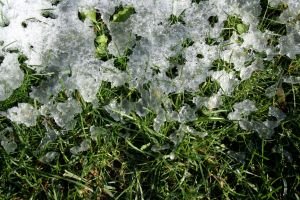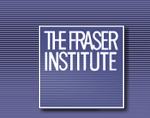from the Quesnel Cariboo Observer, by Ben Parfitt
These words took on new meaning for me recently while touring two radically different forestry operations a half-hour drive’s east of Prince George, near the eastern front of the pine-beetle outbreak now sweeping through the Interior.
These days, Prince George is awash in wood. Trucks laden with logs are everywhere, coming into the city from all directions and, in some cases, heading out because so many trees are coming down that not even milling powerhouses like Prince George can consume them all.
The first site lay just south of the Yellowhead Highway, off a logging road covered in fresh snow. Driving up the crystalline corridor where a moose had cut a fresh trail earlier that morning, small-scale logger Dave Jorgenson pointed to a thick stand of towering trees.
"That’s what I logged."
Down a thin skid trail, Jorgenson stopped to explain how he had taken roughly 1,000 trees out of this forest, 95 per cent of them killed earlier by beetles. The fruit of that labor now lay by the logging road in neat rows beside Jorgenson’s idled green forwarder.
However, he wasn’t so much interested in what he’d logged as what he’d left behind.
Following logging, three-quarters of the trees remained untouched, many of them tall, commercially prized spruce. And climbing up out of the shade rose other young spruce and balsam trees.
After driving five minutes east, we veered north into a clearcut that branched in so many directions it defied description.
Jorgenson reckoned at least 50,000 trees had come down in this now-barren landscape, enough wood to build a major subdivision.
All the trees here were allegedly "salvaged" to extract economic value before the "pine beetle-attacked" trees lost their use for lumber or pulp.
The trouble was many of the trees were perfectly healthy spruce trees. Greed had trumped common sense.
As we passed by a long deck of stacked logs, all of them spruce, not a pine among them, he shook his head.
"If they’re logging a spruce tree right now, that’s a pine tree they’re not logging. And 10 to 15 years down the road when that pine tree is rotting, there won’t be that spruce tree either."
If all the forests those marauding beetles are attacking these days were homogenous tracts of pine trees, then the massive salvage logging operation now underway on public lands might make sense.
But as work by scientists with the Canadian Forest Service, B.C.’s Ministry of Forests and the University of Northern British Columbia is showing, just over one-quarter of forests attacked by the pests are comprised of trees that are 80 per cent or more pine.
This means the vast majority of stands now being salvage logged have some pine in them but are also comprised of other trees, like spruce in the north and fir in the south.
In fact, in many attacked stands almost all the trees are non-pine, while in others a significant minority of trees are non-pine and perfectly healthy.
Such a continuum should dictate very different approaches to logging.
Instead, a cookie-cutter approach is used.
Clearcuts race across the landscape - clearcuts where perfectly healthy trees are logged and vigorously growing young trees in the understorey are mowed down as well, thus denying future generations wood - all on the specious grounds the forest is dead and must be salvaged before losing its value.
If a concerted effort was made to put a stop to the clear-cutting of so-called mixed forests, it is interesting to note the province might not have to ratchet up Interior logging rates to today’s record highs.
Nor might many Interior communities be faced with the humbling prospect of precipitous declines in future logging rates, the price paid for today’s over-consumption.
For the sake of a saner and more sustainable future, let’s hope provincial Forests Minister Rich Coleman listens to what forest scientists are saying.
Ben Parfitt is resource policy analyst with the Canadian Centre for Policy Alternatives’ BC Office and author of Battling the Beetle: Taking Action to Restore British Columbia’s Forests
http://www.quesnelobserver.com/portals-code/list.cgi






